Discover Laos
That Luang Stupa (Great Sacred Stupa)
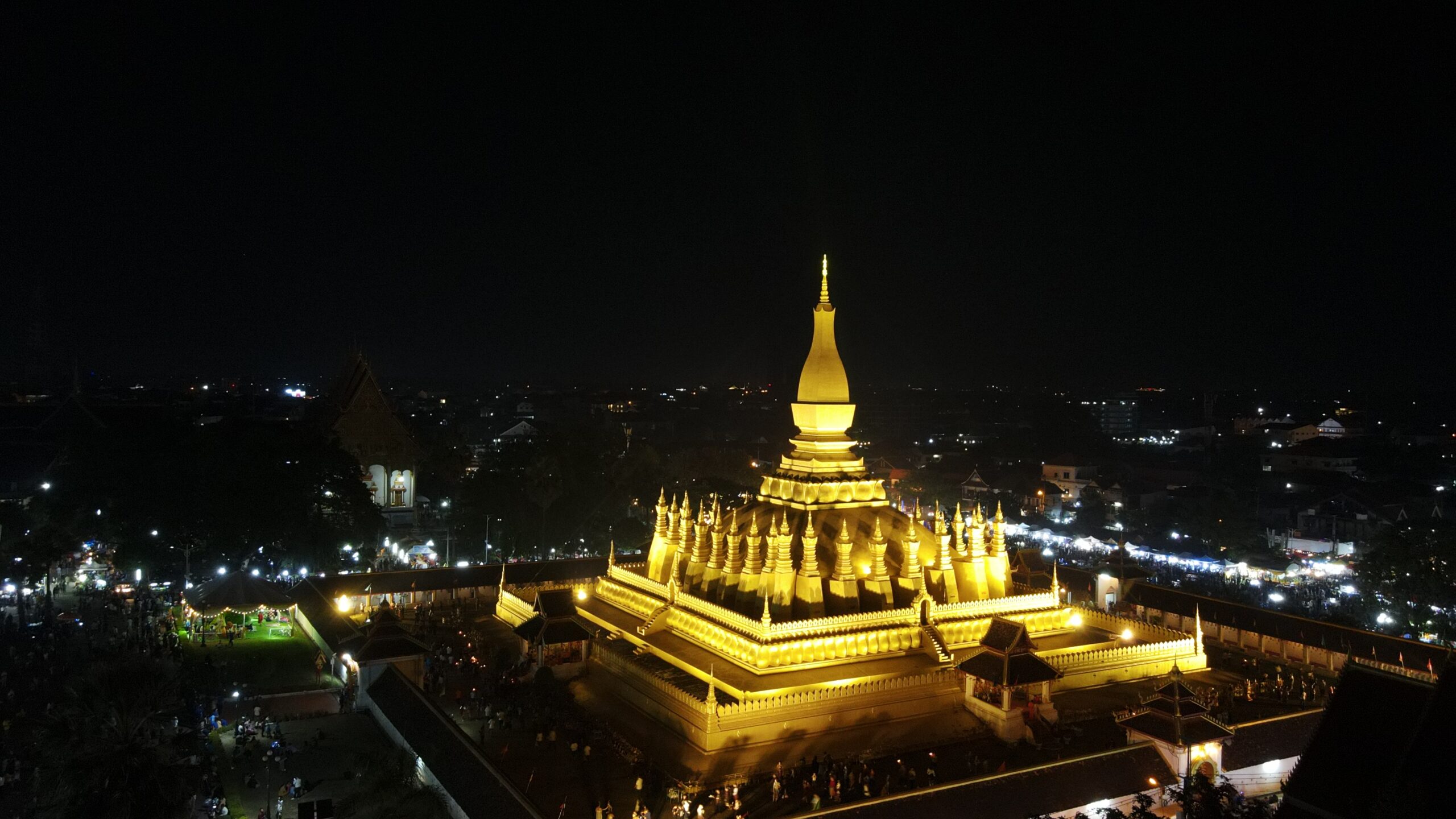
The site of That Luang has been in use since the year 236 of the Buddhist Calendar (307 BC). When the first governor of Vientiane, Phaya Chanthabouri Pasitthistack or Bourichan built a structure that looked like a kiln of about 9 metres high and 10 metres wide. The original stupa was built on the site in 1566 by King Sayasetthathirath and was restored in 1953.
The golden stupa is 45 metres tall and is believed to contain a relic of the Lord Buddha. The gold centrepiece of this stupa echoes the curve of an elongated Lotus bud. Today it is the most important national cultural monument.
Patuxay (Victory Monument)
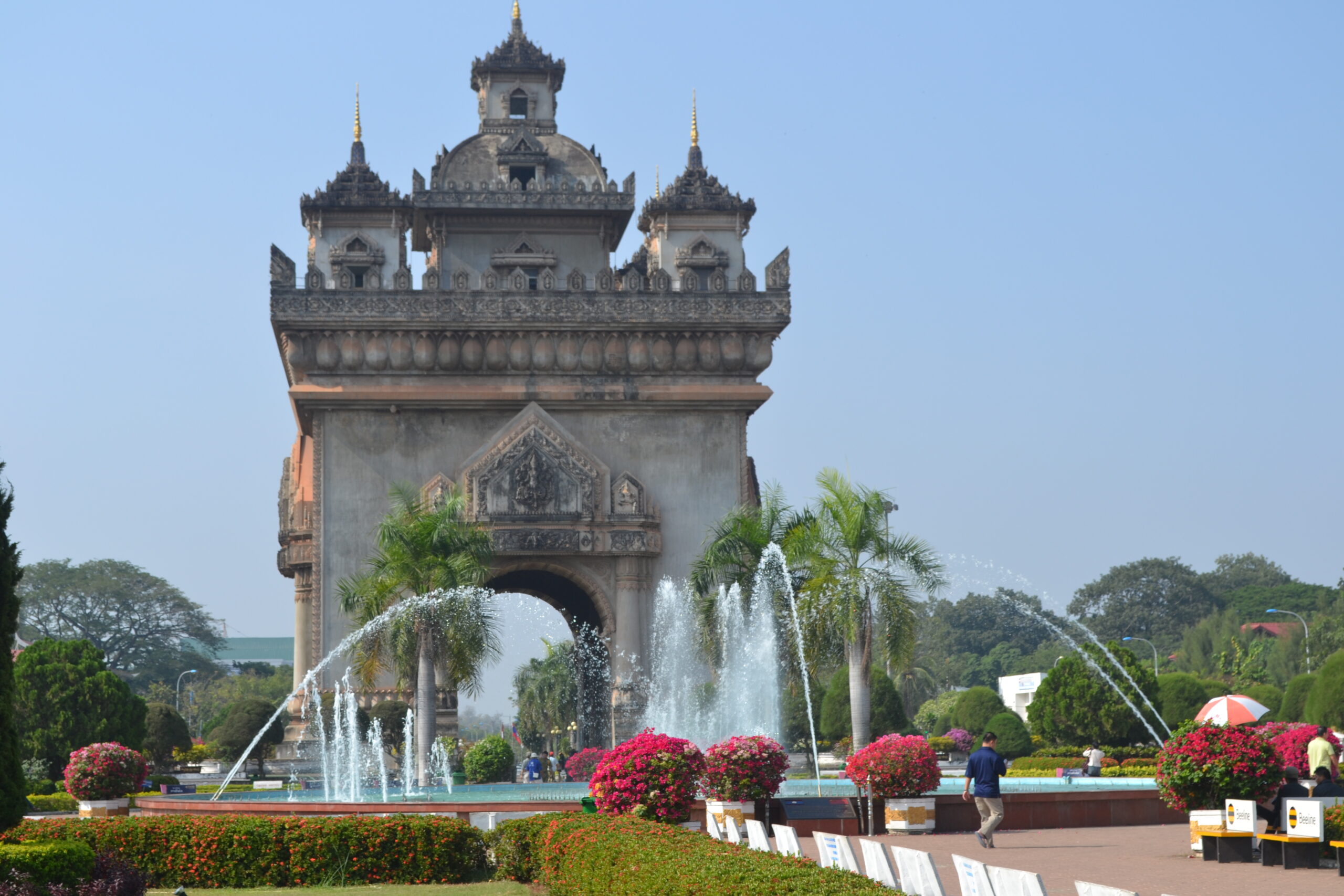
The memorial monument, Patuxay, was built in 1957 and is perhaps the most prominent landmark in the city. It is situated in Lanexang Avenue. While the Arc de Triomphe in Paris inspired the architecture, the design incorporates typical Lao motifs including “Kinnaly”, a mythical bird woman. Energetic visitors can climb to the top of the monument, which reveals an excellent panoramic view of the city.
Hor Phra Keo Museum
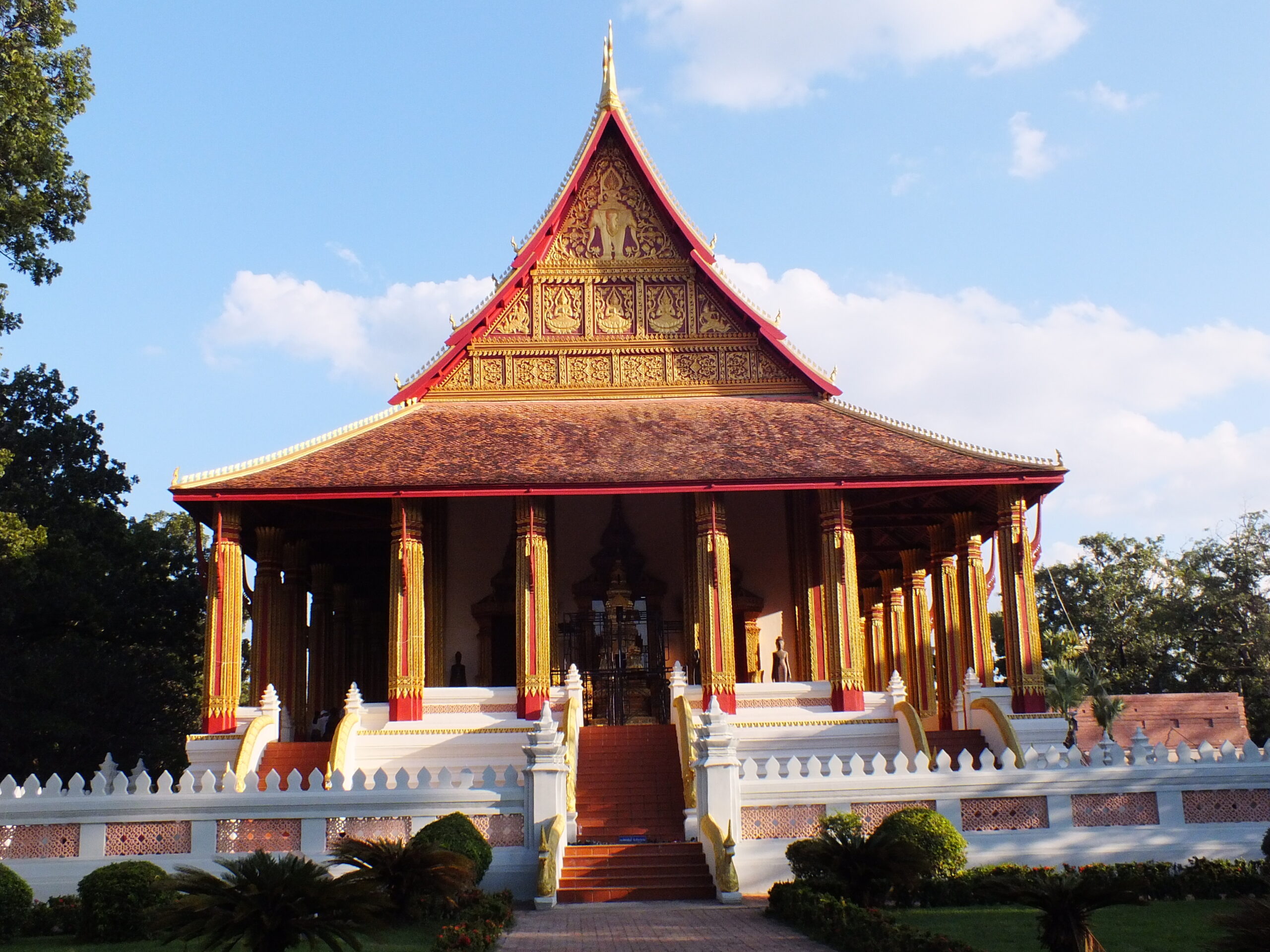
Originally, the ancient temple was built in 1565 by King Xayasetthathilath to house the Emerald Buddha in 1565-1779 (lost to the Siamese in 1828)as his personal place of worship. It was reconstructed in 1936. For this reason and unlike other temples in Laos, monks have not taken up residence here.
During the 1970s, the temple was converted from a place of worship into a museum and now houses the finest national collection of Buddhist sculptures and artefacts. From the terrace of Hor Phra Keo, one can enjoy a view overlooking the President’s Palace (former Royal Palace) and gardens.
Sisaket Temple
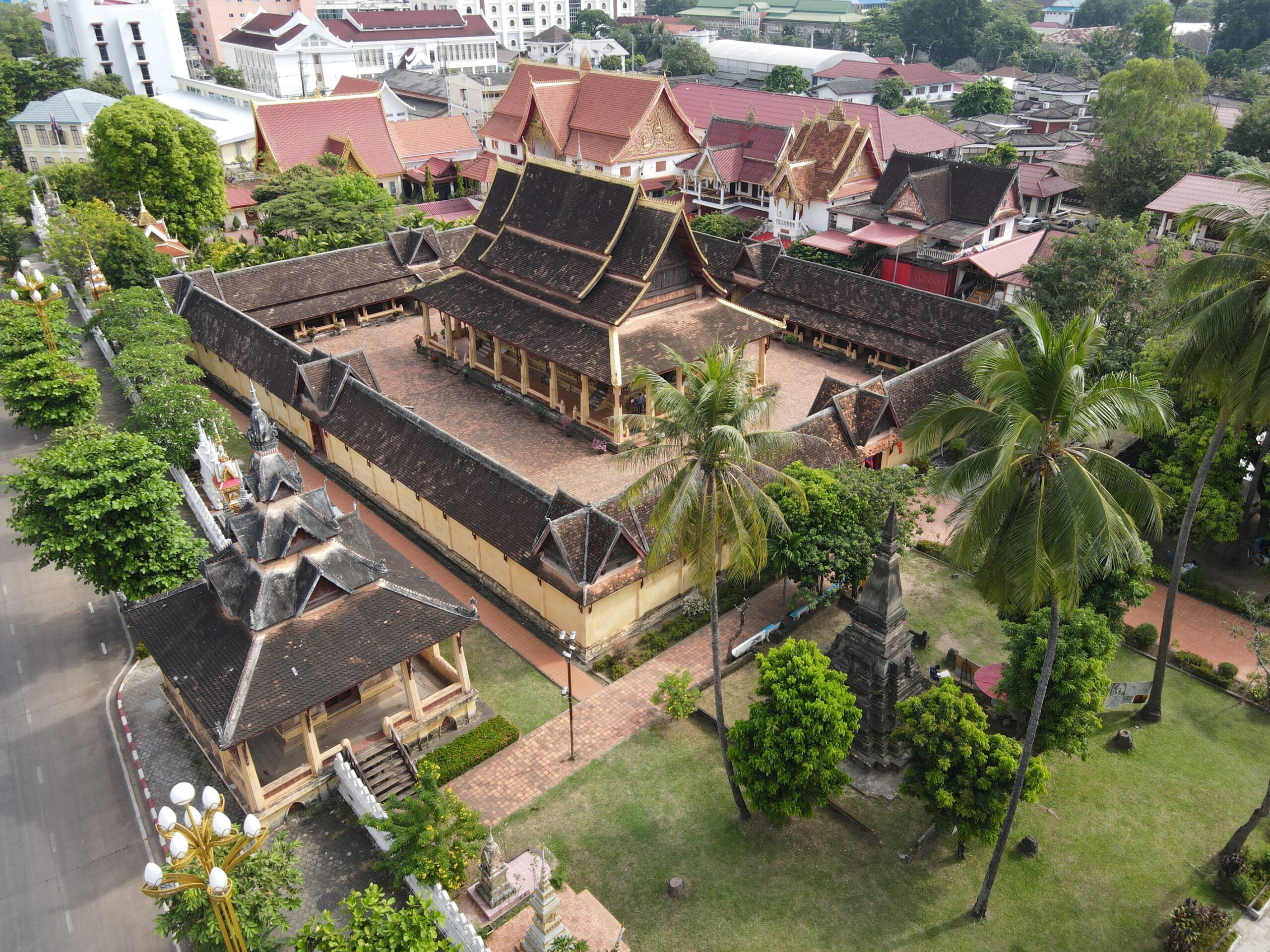
Sisaket is the only ancient temple remaining intact after the destruction of the Siamese in 1828. It’s located in the centre of the old city, where it was built in 1818 by King Anouvong.
The old monastery stands intact in its original form and certainly is one of the most interesting in the country. Inside the main hall, the courtyard walls house hundreds of little shelves containing a total of 6,840 Buddha images.
Buddha Park (Xieng Khuan)
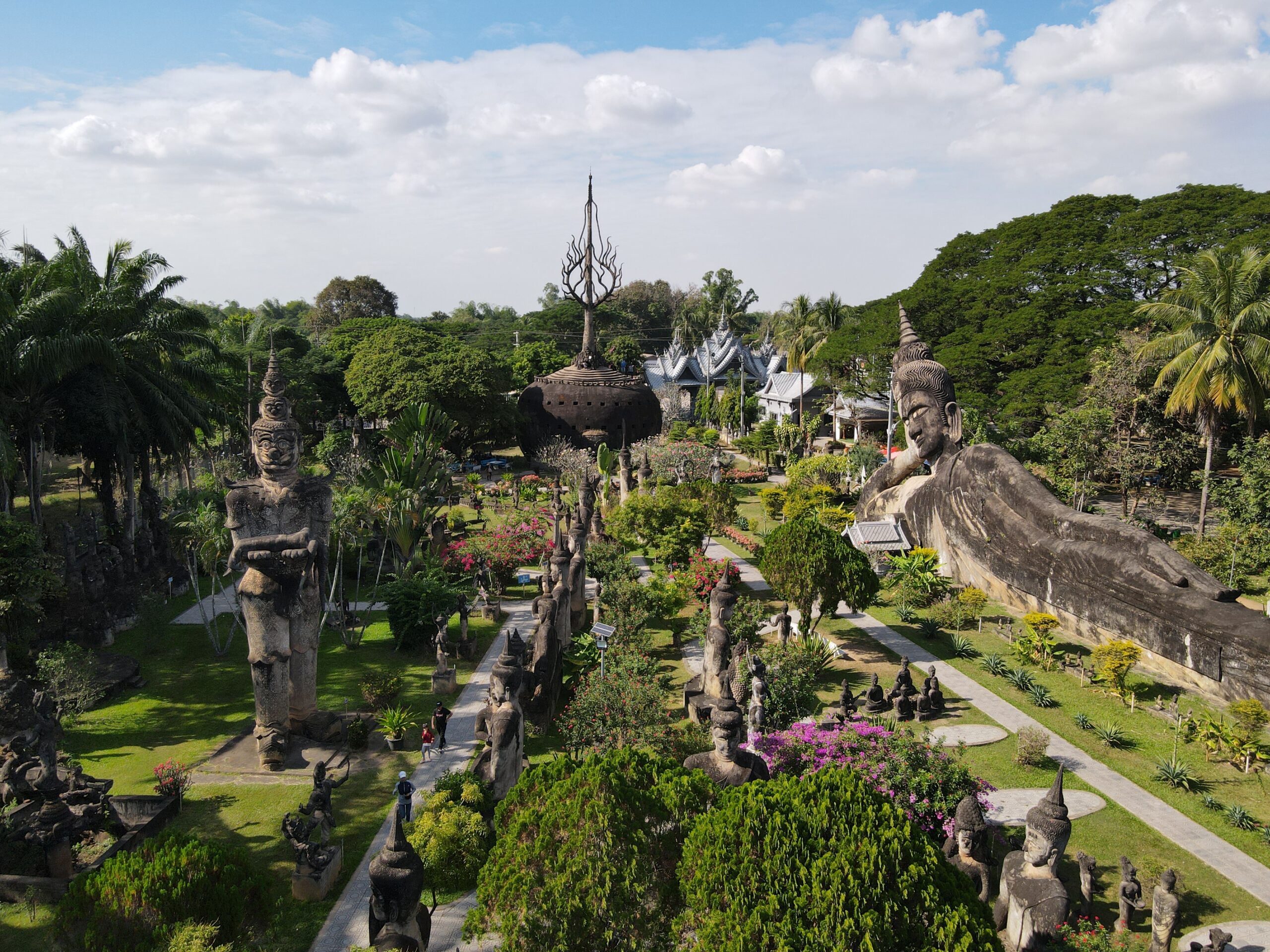
Buddha Park is a famous sculpture park with more than 200 religious statues including a huge 40-metre high reclining Buddha image. The best spot for photography here is on top of the giant pumpkin structure standing about three storeys high.
The entrance is crafted to look like a demon’s mouth (about 3 metres high) with a stone ladder inside leading to a bird’s eye view of the entire Xieng Kuan Park. It was built in 1958 by Luang Pu Bunleua Sulilat, a monk who studied both Buddhism and Hinduism. This explains why his park is full not only of Buddha images but also of Hindu gods as well as demons and animals from both beliefs.
The most outstanding ones include Indra, the king of Hindu gods riding the three-headed elephant (a.k.a. Erawan and Airavata), a four-armed deity sitting on a horse and an artistic deity with 12 faces and many hands, each holding interesting objects.
They are all equally impressive not only because of their enormous size but because they are full of interesting details and motifs. There is a local eatery and a cafe offering food and drinks to tourists at one end of the park right next to the Mekong River that makes a great spot to chill after all the walking and climbing. Among the popular snacks include papaya salad, fried bananas and cold Lao beer. It also has a souvenir shop and restrooms. There is a small fee for entering the park as well as for photography.
Simuang Temple
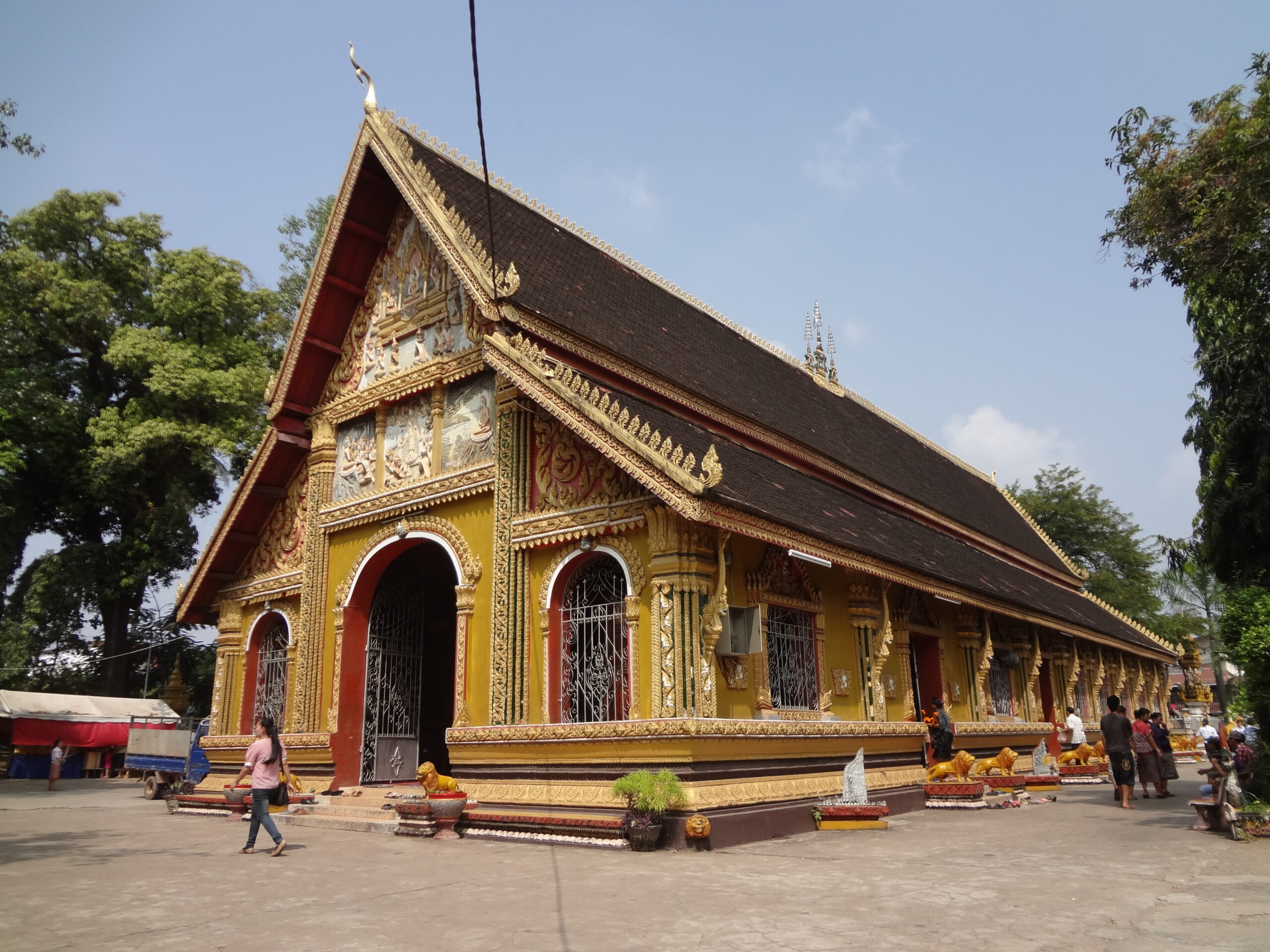
Simuang Temple is one of Vientiane’s most popular sites of worship, and offers a fascinating insight into how old animist beliefs have blended seamlessly with Theravada Buddhism. The original city pillar of Vientiane is found in Wat Simuang located in Ban Simuang village along Setthathirath Road. It was built in 1956 and is believed to be guarded by the spirit of a local girl called “Si”.
Local legend has it that Nang Si, who was pregnant at the time, leapt to her death as a sacrifice, just as the pillar was being lowered into the hole. A very colourful Phasat Pheung (wax pavilion procession) attracts large crowds to Simuang Temple, taking place just two days prior to the That Luang Festival in November.
On a daily basis, Wat Si Muang attracts crowds of local Buddhists who want to benefit from its “good luck” powers. It is commonly thought that if you pray for something here and simultaneously make a promise, your wish will be granted – provided you return and fulfil your promise.

Contact Us
ASEAN TOURISM ASSOCIATION (ASEANTA)
Door A, Level 6
Ministry of Tourism & Culture Malaysia
No. 2 Tower 1, Jalan P5/6
Precinct 5
62200 Putrajaya
Malaysia
